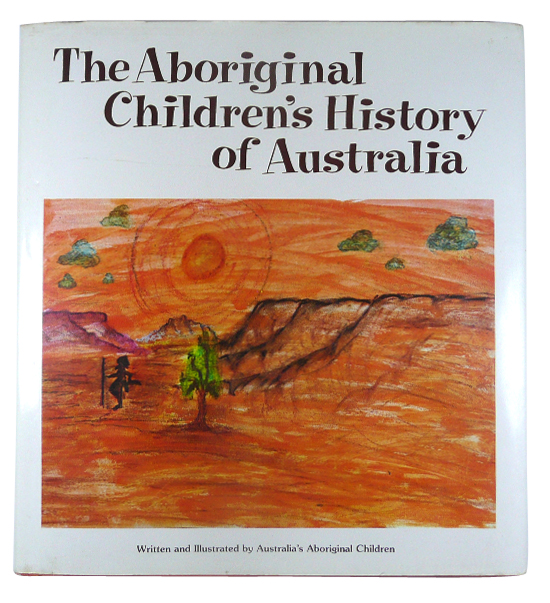The last entry in this book begins: ‘This is our land. It goes back, a long way back, into the Dreamtime, into the land of our Dreaming.’ In paintings, drawings in texta and pencil, children from communities all over Australia tell stories from their world in the late 1970s, and times past. From these stories and artwork, the editors curated and arranged the book chronologically with the headings Old Time; The Macassans; The Whitefellas; Today; and My Country.
Historian Dr Mary Tomsic says, ‘Children’s voices, as expressed in books by children, is a significant but underutilised cultural and historical source that records children’s experiences and interpretation.’
Interactions with visitors and invaders – Captain Cook, white settlers and the Japanese during World War II – are retold in detail, as are the activism at Wave Hill. Bloody conflict and suffering are not avoided but neither are they sensationalised. As Alex Ronan of Perth tells the story of the early activist Yagan on page 62 of this book: ‘Yagan made friends with [the white men] but they made war…. This got worse and worse until Yagan and his dad were killed. The mother cried.’
The format of the book is a square and substantial art book from the period, and has a high standard of reproduction which honours the children’s work. As well as historical subjects, the young writers tell stories of their ordinary life in a way that relates universal childhood experiences. The artists of individual paintings in the book are identified by their community and stated in captions. Heartbreakingly, there is more than one stating 'Artist Deceased'. It is not always clear whether the story on the same page or spread has also been written by that child, but there is a list of the storytellers at the start of the book.
The National Museum of Australia has housed the artwork for this book since 1991, and is working on digitising and repatriating originals back to artists in their communities. Dr Ian Coates, head of the Collections Development Team at the National Museum of Australia says the museum is keen to get the drawings into circulation again so people can see the way that Aboriginal children at that time saw Australian history. Many of the drawings are already accessible on the National Museum of Australia website.
There is a television film of the project (made at the same time) called ‘Dreamtime, this time dreamtime’ – described on Trove but not available online.
Author Merrkiyawuy Ganambar was a student at Dhumpuma College in Gove NT and remembers: ‘I think we had to do three things that was happening at that time: one was the beginning, what they call the Dreamtime stories, the story of how life happened and that’s why I drew the two sisters down on the beach, and then the next one was what’s happening now, and the last one was what would you like to see in the future?’
This book undoubtedly paved the way for children to be recognised and listened to as authors and illustrators as they are today by publisher Magabala Books and others.
'The Aboriginal Children’s History of Australia' was Commended in the Children's Book Council of Australia, Picture Book awards, 1978.

